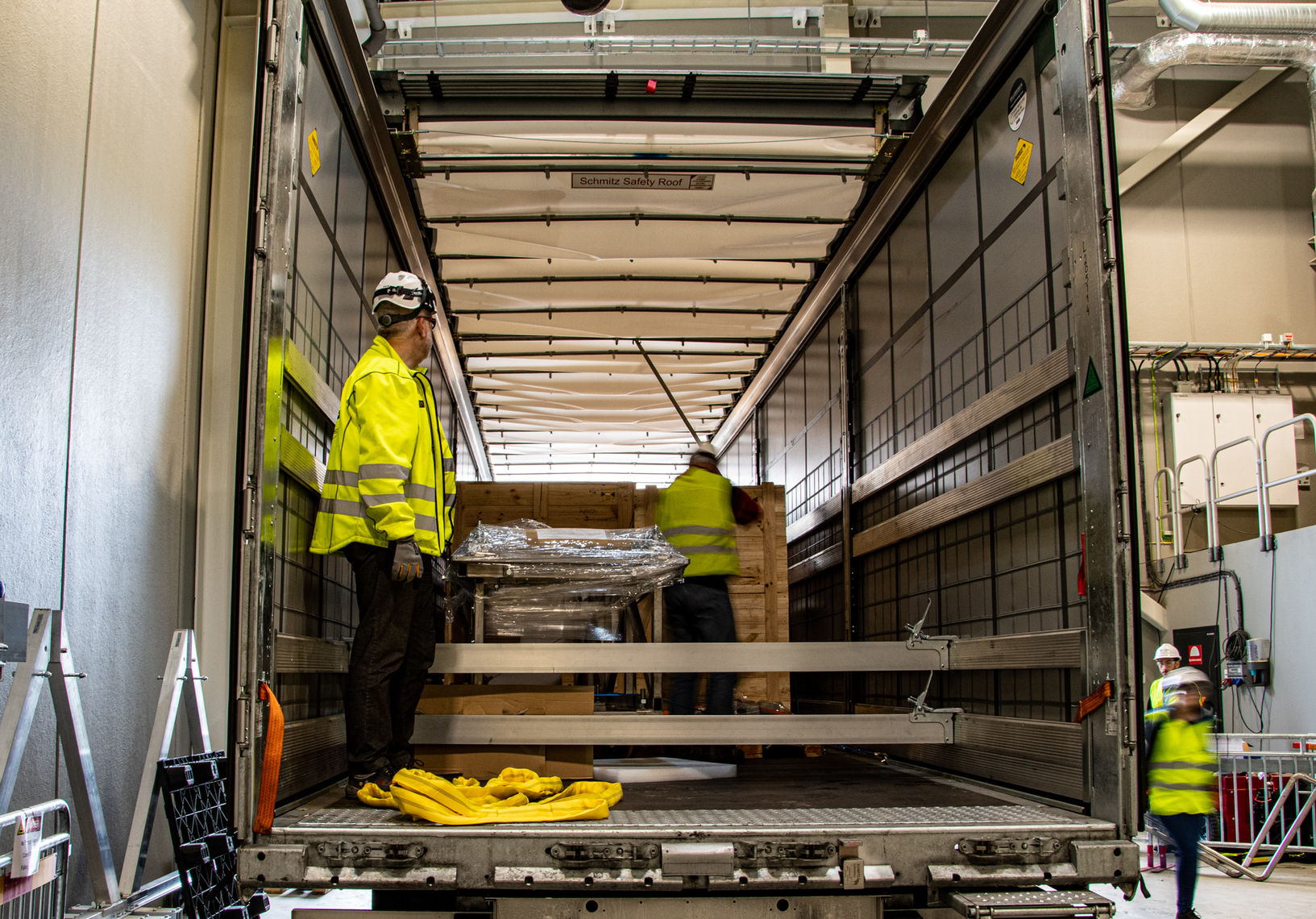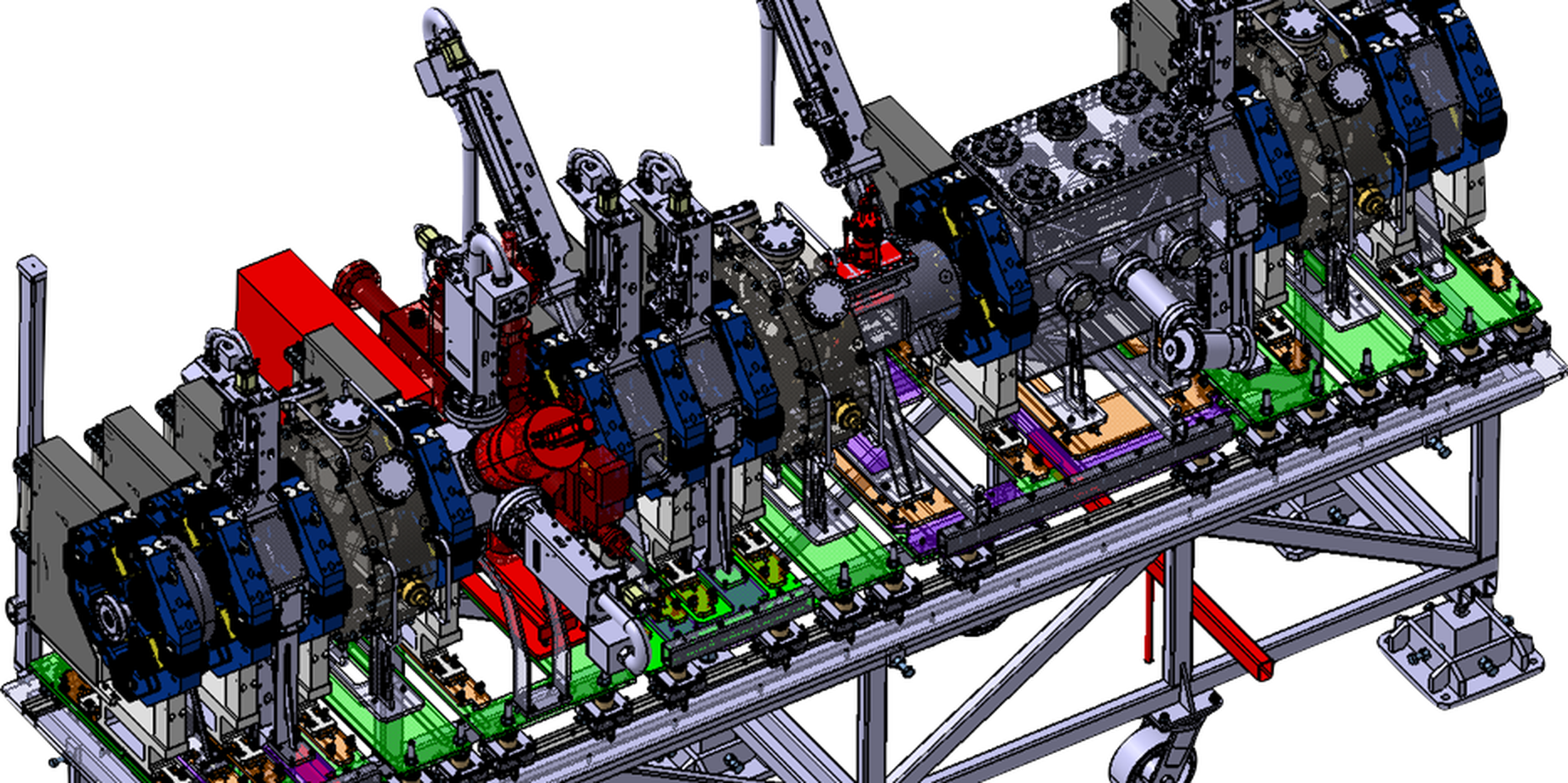
An elemental accelerator component, the MEBT (medium energy beam transport), was recently delivered to ESS in Lund, following a journey from Spain. This key technical system is an important Spanish in-kind contribution that has been designed, manufactured and delivered by ESS’s in-kind partner, ESS Bilbao.
The MEBT is a machine section in the normal conducting accelerator, or warm LINAC, which is the first part of the ESS Linear Accelerator (LINAC). The MEBT will diagnose and optimise the proton beam for further acceleration on its way from the Ion Source to the super-conducting stages of the Accelerator, matching the beam from the Radio Frequency Quadrupole (RFQ) into the subsequent Drift Tube Linac (DTL). The four-metre long MEBT is densely packed with hundreds of sub-systems designed to shape and characterise the proton beam, as well as clean it of unwanted particles to prevent energy losses.
“The MEBT is a very important component in the early stages of acceleration. In the MEBT the beam is measured and a high beam quality set, using numerous advanced beam diagnostic devices, a scraper system to remove halo transversally, and RF bunchers to reduce losses longitudinally,” says Mats Lindroos, Head of the ESS Accelerator Division.
ESS Bilbao, which manages Spain’s in-kind contributions to ESS, is a centre for neutron technologies that is involved in the design, manufacture and delivery of several key components to ESS, including the MEBT, Radio Frequency (RF) Systems, Target systems and the instrument MIRACLES. Since 2011, over 20 physicists and engineers at ESS Bilbao have worked to integrate the many focusing elements and sub-systems into the MEBT’s limited space.
“The highly qualified and competent ESS Bilbao team has from the very beginning worked very hard to assure a timely delivery of the MEBT, in spite of many challenges,” says Mats Lindroos.
A team from ESS Bilbao will, together with several involved ESS expert teams, install the MEBT in the tunnel during the coming weeks.

























